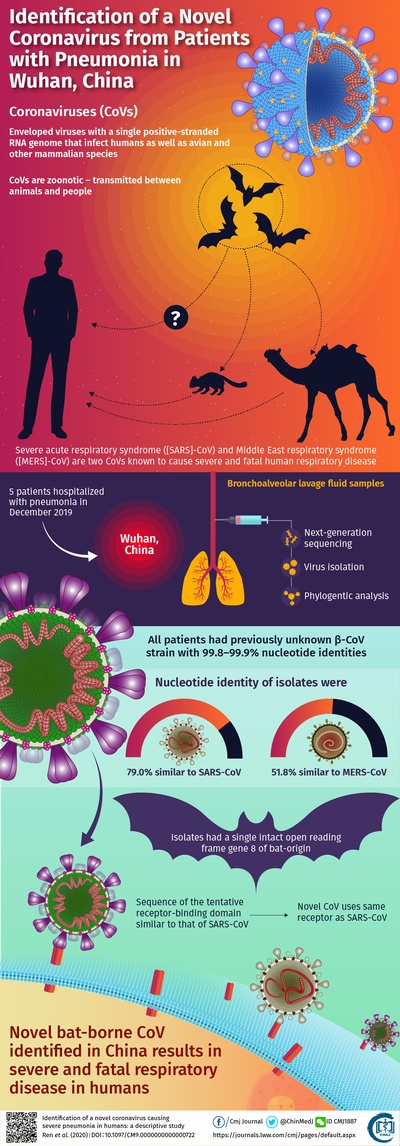The 2019 coronavirus (CoV) causes fatal pneumonia that has claimed over 1,300 lives, with more than 52,000 confirmed cases of infection by mid-February, along with various impacts to the lives of the scholars who revealed the virus against the wishes of the Chinese government.
In early December, a few people in the city of Wuhan in the Hubei province of China became ill after going to a local seafood market. They experienced cough, fever, and shortness of breath, and even complications related to acute respiratory distress syndrome (ARDS). The immediate diagnosis was pneumonia, but the exact cause was unexplained. Most assumed it was severe acute respiratory syndrome (SARS)-CoV. It turns out to be a completely new virus, though closely related to the bat SARS-like CoV.

Nature is out to kill us, so this is a new virus
The sequencing focused on five patients admitted to Jin Yin-tan Hospital in Wuhan, most of whom were workers in the Huanan Seafood Market in Wuhan. These patients had high fever, cough, and other symptoms, and were initially diagnosed to have pneumonia, but of an unknown cause. Some patients’ condition rapidly worsened to acute respiratory distress syndrome, one died. The scientists used bronchoalveolar lavage (BAL) fluid samples, a procedure in which sterile fluid is transferred to the lungs through a bronchoscope and then collected for analysis, from the patients.
Based on sequencing of the DNA/RNA from the BAL fluid samples, the scientists found that most of the viral reads belonged to the CoV family. The scientists then assembled the different “reads” that belonged to CoVs and constructed a whole genomic sequence for the new virus; these sequences were 99.8-99.9% similar among all the patients’ samples, confirming that this virus was the common pathogen in all the patients.
Using homology analysis, where a genome sequence is compared against other known genome sequences (with a preset threshold of 90% for it to be considered a “new” sequence), they confirmed that the genome sequence of this new virus is 79.0% similar to the SARS-CoV, about 51.8% similar to the MERS-CoV, and about 87.6–87.7% similar to other SARS-like CoVs from Chinese horseshoe bats (called ZC45 and ZXC21). Phylogenetic analysis showed that the sequences of the five CoV strains obtained were closest to those of bat-derived strains, but formed separate evolutionary branches.
These findings clearly suggested that the virus originated from bats.
Lastly, the scientists moved to “isolating” the virus from the BAL fluid samples by checking whether the fluid samples showed cytopathic effect to cell lines in the laboratory. The cells exposed to the fluid samples were observed under an electron microscope, and the scientists found characteristic CoV-like structures. They also used immunofluorescence—a technique that uses specific antibodies tagged with fluorescent dyes. For this, they used serum from the recovering patients (which contained antibodies), which reacted with the viral particles inside the cells; this confirmed that this virus was indeed the cause of the infection.
All human CoVs are zoonotic
Although 4 of the 5 patients from whom this virus was identified were from a seafood market in Wuhan, the exact origin of infection is unknown. The CoV could have been transmitted to humans through an “intermediate” carrier, such as in the case of SARS-CoV (palm civet meat) or MERS-CoV (camel) but all human CoVs are zoonotic so regular monitoring in China will be vital.




Comments